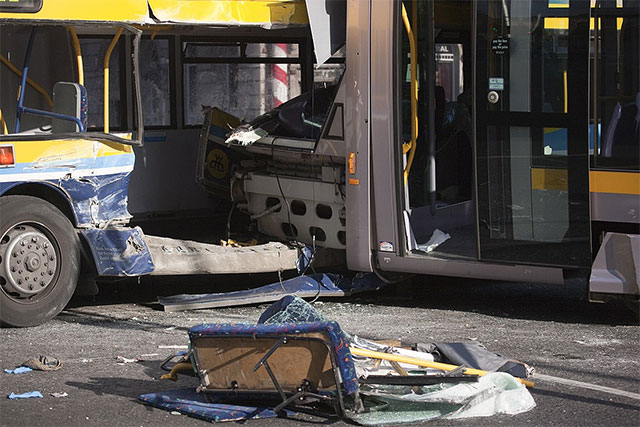City bus accidents can occur, although their frequency may vary depending on various factors such as the location, the condition of the bus, driver behavior, road conditions, and other contributing factors. However, when city bus accidents do occur, they can have significant consequences due to the large number of passengers typically involved and the size of the bus itself. Injuries resulting from bus accidents can range from minor to severe, and in some cases, fatalities may occur. The role of a bus incidents lawyer comes into play when individuals who have been injured in a city bus accident seek legal representation.
Table of Contents
City Bus Accidents

This article aims to explore the prevalence of city bus accidents and shed light on the factors contributing to such incidents.
Understanding the Scope:
City bus accidents encompass a broad range of incidents, including collisions with other vehicles, pedestrians, or stationary objects, as well as bus-related injuries resulting from sudden stops or vehicle malfunctions. A bus incidents lawyer from Las Vegas shares his opinion: “It is essential to assess the prevalence of these accidents in relation to the overall volume of bus operations and consider statistical data from various regions to gain a comprehensive perspective”.
Statistical Overview:
Accurate and up-to-date statistics on city bus accidents can vary between countries and jurisdictions, making it challenging to provide a definitive global assessment. However, some regions regularly report accident data, allowing us to gain valuable insights into the frequency of such incidents. According to the National Highway Traffic Safety Administration (NHTSA) in the United States, between 2009 and 2018, there were an average of 16,000 bus accidents annually, resulting in approximately 325 fatalities each year. These figures include accidents involving all types of buses, including city buses, intercity coaches, and school buses.
Several factors contribute to city bus accidents. Human error, such as distracted driving, speeding, or fatigue, remains a primary cause. Additionally, inadequate driver training, poor maintenance practices, and insufficient infrastructure can increase the likelihood of accidents.
Following are the some common factors that influence city bus accidents:
1. Driver Behavior and Training:
Like any vehicle, city buses can be involved in accidents due to human error. This includes factors such as driver distraction, fatigue, or recklessness. It is crucial for bus companies to prioritize driver training and implement strict safety protocols to minimize the risk of driver-related accidents.
2. Traffic Conditions:
City buses often operate in congested areas with heavy traffic, increasing the likelihood of accidents. Factors such as reckless driving, failure to yield, or difficulty maneuvering in tight spaces can contribute to collisions. Implementing efficient traffic management systems, dedicated bus lanes, and improved infrastructure can help mitigate these risks.
3. Pedestrian and Cyclist Interactions:
Buses frequently navigate areas with high pedestrian and cyclist traffic. Accidents involving buses and vulnerable road users can occur due to poor visibility, failure to yield, or miscommunication between all parties involved. Promoting pedestrian and cyclist safety through awareness campaigns, designated lanes, and improved infrastructure can help mitigate these risks.
4. Vehicle Maintenance:
Regular maintenance and inspection of city buses is essential to ensure safe operation. Malfunctioning brakes, tire blowouts, or other mechanical issues can lead to accidents. Proper inspection and maintenance schedules, along with stringent regulations for bus companies, are crucial in preventing accidents caused by vehicle failures.
5. Road Conditions and Weather:
Adverse weather conditions and poorly maintained roads can increase the risk of accidents for all vehicles, including city buses. Slippery surfaces, reduced visibility, and potholes can pose challenges for bus drivers. Governments and local authorities should prioritize road maintenance to ensure safer travel conditions for all road users.
Recognizing the importance of passenger safety, authorities and transportation agencies continuously work to improve safety measures and mitigate the occurrence of city bus accidents. These efforts include:
- Enhanced driver training programs: Comprehensive training programs that emphasize defensive driving, passenger safety, and effective communication can enhance driver skills and reduce the likelihood of accidents.
- Regular vehicle maintenance: Implementing stringent maintenance protocols to identify and address mechanical issues promptly, reducing the risk of accidents caused by vehicle malfunctions.
- Infrastructure improvements: Developing dedicated bus lanes, clear signage, and well-designed bus stops to create a safer environment for buses to operate.
- Technological advancements: The integration of advanced safety features like collision warning systems, automatic braking, and blind-spot detection can provide an additional layer of protection for both drivers and passengers.
- Improved Infrastructure: Enhancements such as well-marked bus stops, clear signage, and dedicated bus lanes can improve traffic flow, reduce congestion, and create a safer environment for all road users.
- Driver Monitoring Systems: Installing systems that monitor driver behavior, such as fatigue detection or distraction alerts, can help identify potential risks and take proactive measures to mitigate them.
- Public Awareness and Education: Engaging in public awareness campaigns regarding pedestrian safety, responsible driving around buses, and promoting mutual respect among road users can foster a culture of safety and reduce the likelihood of accidents.
While city bus accidents do occur, they are relatively uncommon compared to the total number of bus journeys made daily. Various factors contribute to the occurrence of accidents, including driver behavior, traffic conditions, pedestrian interactions, and vehicle maintenance.
However, through comprehensive driver training, technological advancements, infrastructure improvements, and public awareness campaigns, the incidence of city bus accidents can be further minimized. Continued efforts to prioritize safety in urban transportation systems will ensure that city buses remain a reliable and secure mode of public transportation for commuters worldwide.













